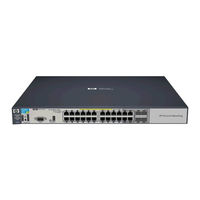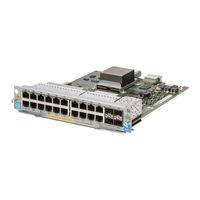User Manuals: HP J9478A Gigabit Ethernet Switch
Manuals and User Guides for HP J9478A Gigabit Ethernet Switch. We have 2 HP J9478A Gigabit Ethernet Switch manuals available for free PDF download: Advanced Traffic Management Manual, Installation Manual
Advertisement
HP J9478A Installation Manual (56 pages)
Switch zl Modules
Brand: HP
|
Category: Network Router
|
Size: 1.78 MB

